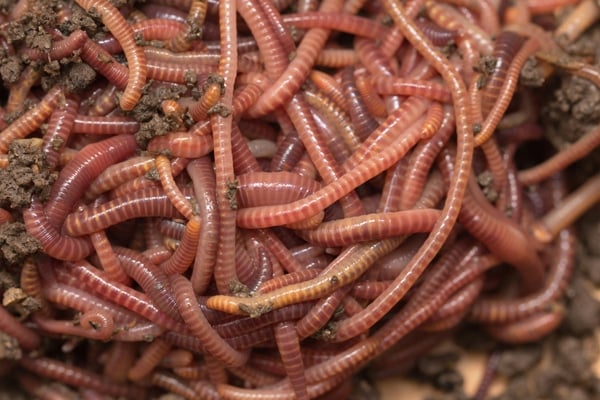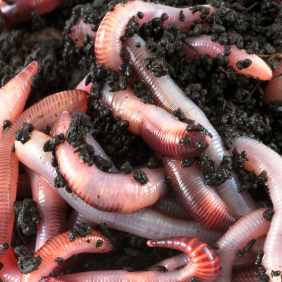Making Use Of Red Wigglers for Efficient Organic Waste Disposal
Making use of red wigglers for organic waste disposal provides an engaging approach to handling food scraps while advertising environmental sustainability. These worms not just enhance waste decomposition yet also produce beneficial worm castings, which can significantly boost soil health and wellness. Their ability to process huge volumes of organic product with very little initiative placements them as an obtainable solution for homes and neighborhoods alike. Comprehending the nuances of setting up a successful worm bin and maintaining an optimal environment is crucial for maximizing their advantages. The following actions in this process may amaze you.
Advantages of Utilizing Red Wigglers
One of one of the most engaging advantages of making use of red wigglers for natural waste disposal is their remarkable performance in composting. These worms, clinically called Eisenia fetida, are specifically adjusted for breaking down natural materials, allowing them to process waste up to two times their body weight each day. This quick decay not only speeds up the composting procedure but also creates nutrient-rich worm spreadings that significantly improve dirt top quality.
Furthermore, red wigglers add to a reduction in landfill waste. By diverting natural products from garbage dumps, they help decrease methane exhausts-- a potent greenhouse gas. This environmental benefit is vital in the fight versus environment change.
In addition, red wigglers are low-maintenance and can flourish in numerous environments, making them easily accessible for both novice and knowledgeable composters. Their capacity to recreate promptly ensures a consistent populace, facilitating continuous waste handling.
Establishing Your Worm Bin
Creating an efficient worm bin is vital for optimizing the advantages of composting with red wigglers. Make certain the container has appropriate drain openings to avoid excess wetness, as red wigglers flourish in a damp but not soaked setting.
(NC Worm Farms)Next, prepare the bedding material, which offers as the worms' environment and food resource. The bin ought to be put in a dark, temperature-controlled location, preferably in between 55 ° F and 77 ° F, to keep worm activity.
Once the bin is set up, present the red wigglers, permitting them to acclimate to their new environment. It's vital to check dampness degrees and temperature frequently. A well-kept container will certainly not just sustain the health and wellness of the worms however likewise assist in reliable disintegration of natural waste. By complying with these standards, you can produce a successful environment that adds to sustainable waste administration.
(red wiggler worms for sale near me)
What to Feed Red Wigglers
An understanding of the ideal diet for red wigglers is crucial for keeping a healthy worm population and enhancing composting performance. Red wigglers thrive on a diverse diet plan that primarily is composed of organic materials. Ideal food sources consist of veggie scraps, fruit peels, coffee premises, eggshells, and shredded paper. These things not just provide vital nutrients however additionally add to the dampness equilibrium within the worm container.
It is important to prevent certain foods that can harm the worm population. Red wigglers should not be fed meat, milk products, oily foods, or processed things, as these can draw in insects and produce undesirable smells. red wigglers. Additionally, citrus fruits and zesty foods ought to be reduced, as their acidity can be detrimental to worms
Monitoring the worm container for food consumption rates will assist ensure that red wigglers are obtaining a sufficient diet regimen while preserving a reliable composting environment. Correct feeding practices are crucial for promoting a thriving environment within the worm container.
Preserving Your Worm Environment
A well-maintained worm habitat is necessary for the wellness and performance of red wigglers. To ensure optimal conditions, it is essential to keep track of temperature, wetness, and aeration within the worm bin (red wigglers).
A great guideline of thumb is to maintain dampness at around 70% to 80%. If the bed linen becomes also damp, it can lead to anaerobic conditions that are hazardous to the worms.

Making Use Of Worm Spreadings in Horticulture
Rich in nutrients and helpful bacteria, worm castings act as an extraordinary organic fertilizer for horticulture. Generated via the digestion processes of red wigglers, these castings contain a selection of essential nutrients, consisting of nitrogen, phosphorus, and potassium, which advertise robust plant growth. Unlike artificial plant foods, worm castings offer a slow-release device, making certain that nutrients are offered to plants over a prolonged period, therefore lowering the danger of nutrient leaching and soil deficiency.
Along with nutrition web content, worm castings improve dirt structure and oygenation, boosting wetness retention and water drainage. The microbial life present in worm spreadings aids to suppress pathogens and advertises a healthy dirt ecosystem, more profiting plant health and wellness. When incorporated into the soil or utilized as a leading dressing, worm castings can substantially boost seed germination rates, root advancement, and total plant vitality.
For optimal results, gardeners must use worm spreadings at a price of 1-2 inches per square foot, blending them right into the dirt or incorporating them into potting mixes. In general, utilizing worm spreadings is a green the original source approach to enriching dirt fertility and making certain thriving yard environments.
Conclusion
